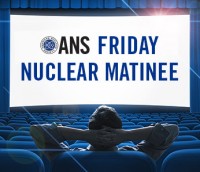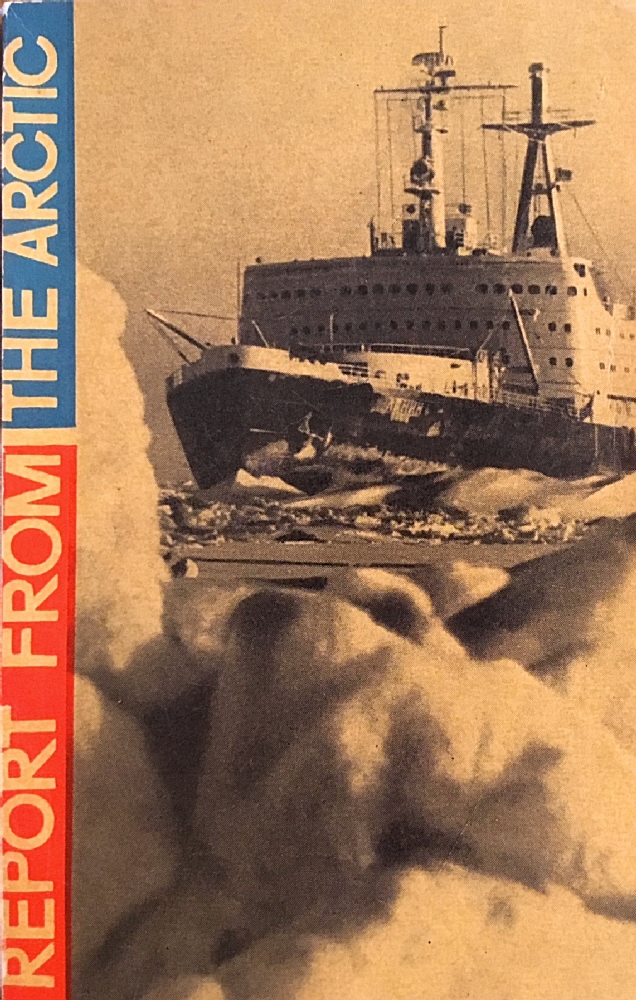Building the Nuclear Steam Supply System for an Icebreaker
 This week's video is a five-minute-plus "tour de force" on the actual steps of fabrication required to manufacture the integral reactors used in the latest Russian nuclear powered icebreakers. The impressive shop operations required to fabricate such a system are usually not seen widely, but in this case, Atomenergomash shows the entire process in both computer graphics and in actual film shot during fabrication. Atomenergomash is the design division of Russian nuclear state enterprise Rosatom; one of the subsidiaries of Atomenergomash is the storied "Joint Stock Company Afrikantov," which is the section responsible for design and fabrication of sea-going nuclear power plants.
This week's video is a five-minute-plus "tour de force" on the actual steps of fabrication required to manufacture the integral reactors used in the latest Russian nuclear powered icebreakers. The impressive shop operations required to fabricate such a system are usually not seen widely, but in this case, Atomenergomash shows the entire process in both computer graphics and in actual film shot during fabrication. Atomenergomash is the design division of Russian nuclear state enterprise Rosatom; one of the subsidiaries of Atomenergomash is the storied "Joint Stock Company Afrikantov," which is the section responsible for design and fabrication of sea-going nuclear power plants.
The nuclear powered icebreakers operated by Russia have their start as far back as the 1950's, when it was decided that in order to keep Northern ports open year-round, nuclear energy would be employed for icebreaking operations on the important shipping routes. The very first nuclear powered non-military ship in the world to operate, the nuclear icebreaker Lenin, was launched in September, 1959. Although the United States' nuclear ship NS Savannah was launched two months prior, the Lenin would beat the Savannah into actual operational service.

"Report from the Arctic" - a Russian press release of sorts, this small book contains the stories of ten journalists who voyaged aboard the nuclear icebreaker Lenin in 1964. Copy in Will Davis' library.
Lenin employed three 90 MWt pressurized water reactors (mounted abreast in a single reactor compartment space) which supplied steam to turbine generators located both fore and aft of the reactor compartment. The ship employed what is known as turbo-electric drive; the propellers were driven by large electric motors, which allowed them to be quickly and easily reversed. The ship had four large electric drive motors but only three propeller shafts; the center shaft mounted two of the 11,000 HP motors, while each of the outer shafts mounted one. The total of 44,000 shaft horsepower was considered adequate at the time, but later icebreakers incorporated much more powerful plants.
Because of the relatively large thermal inertia of Lenin's reactors, they weren't particularly good load followers. So, the ship employed steam bypass systems (around the steam turbines) to allow for rapid changes of propulsion power as required by the rigorous service large icebreakers must endure (as well as for such operations as near shore maneuvering and docking/undocking.) With the bypass system the reactors could maintain a stable power and the steam flow could remain constant; what changed was the amount of steam entering the turbines themselves. (Later Russian icebreakers do not have this disadvantage, and are extremely powerful and flexible - in fact, the Lenin actually had its three reactors replaced with just two of a much more modern design later in its life.)
These nuclear icebreakers can either push slowly into ice, riding up on it and breaking it by weight or else (for thick ice) can ram the ice to split it. After this operation they must back off to get speed for another ram; if they get stuck in the ice after a ramming, they can get themselves by shifting ballast rapidly to rock the ship and working the engines and rudder to get free in a manner not unlike working a cork out of a bottle. This incredibly rugged service is perhaps the most demanding of any seen by any ship; the high power and long on-station time is made possible only by nuclear energy.

Photo in "Report from the Arctic" shows the upper level of the icebreaker Lenin's reactor compartment; the three reactors' locations are easily identified by what appear to be control rod extension shrouds or rod height sensors.
Lenin was considered a success, but, as with NS Savannah, it was perceived that a more economical arrangement of the nuclear plants was desirable - particularly the NSSS, which on both ships was a separate-component design similar to that used in nuclear power plants of the day. Both nations eventually settled on the concept of fully integral pressurized water reactors - leading to the design of the reactor seen in this week's matinee video.
For more information on the latest icebreaker power plant click here.
Footnote: Recently, James Di Pane (of the Heritage Foundation) wrote about the fact that the United States has important interests in areas which are consistently bound by ice, and made a strong case for the Unites States to build a fleet of perhaps as many as six heavy icebreakers. Until now, the United States has employed either fossil fired steam or else diesel power plants in its icebreakers. At least twice in the 1950's the Congress put bills on President Eisenhower's desk to fund development of a nuclear icebreaker for such service, but Eisenhower killed the idea (noting that the Coast Guard had not only not asked for a nuclear icebreaker but in fact had not asked for any at all - the point being that they didn't need to be gifted a nuclear powered icebreaker and all the operational additions required to support it if they didn't need any in the first place.) So, the US interests have had to be protected by diesel icebreakers now for several decades.
While it might not be at the fore of discussion this could well be the time to insert consideration of a nuclear power plant for US icebreakers. The US has both nuclear submarine and nuclear aircraft carrier power plants, and while a carrier reactor might be too big a submarine reactor might not. A case could be made that time on station and independence from the need to constantly refuel could have operational and, perhaps even military and national security advantages. These are exactly the reasons the Russians have employed nuclear powered icebreakers for just short of sixty years. For those unconvinced by these reasons, environmental consideration of the pollution caused by all sorts of fossil powered commercial ships (not just icebreakers of course but cargo and container ships) continues to gain momentum and this might be the opportunity needed to transition at least some military technology to the civilian sector with even a single nuclear powered US icebreaker being the intermediate step. It's a long shot - but many of us feel that nuclear powered ships will come back, with the only question being "when?" So far as I'm concerned, "now" is always a good time to start.
•BREAKING: Immediately after this article went to press, it was announced that the International Maritime Organization has decided that global shipping needs to cut its emissions by half by the year 2050. You can read about this decision here. Maybe "now" IS the time to think nuclear shipping!
Feel free to leave a constructive remark or question for the author in the comment section below.


